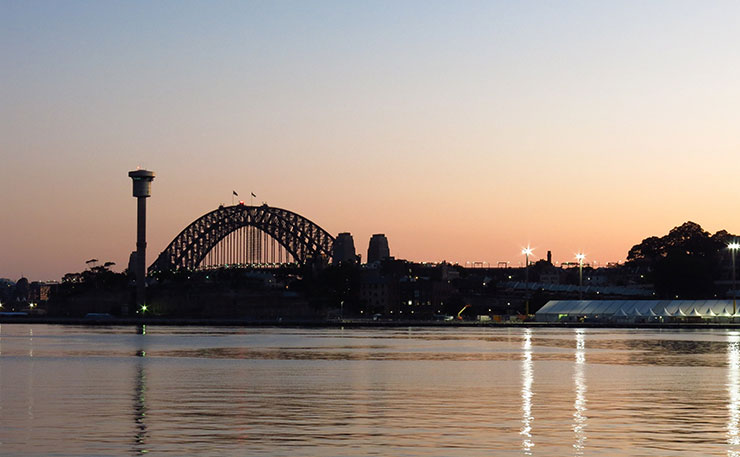Climate change is already a reality, as recent weather on the east coast proves, writes Justin Field.
This summer saw record-breaking temperatures across New South Wales and most of eastern Australia. January 2017 recorded the highest monthly mean temperatures on record for Sydney.
The Bureau of Meteorology has confirmed the 2017 heatwave was the most severe since 1939, and since that time the frequency of such intense large-scale heatwaves has increased across spring, summer and autumn, and especially over the past 20 years. The maximum temperatures from the February 2017 heatwave now make up eight of the top 10 highest February temperatures for NSW ever.
What set this heatwave apart was the prolonged period of sweltering days and nights which impacted over one-third of the state. The people out at Moree suffered the most with 54 days in a row over 35 degrees. Walgett had 48 days above 35 degrees.
The heatwave contributed to almost 100 fires across NSW in February. Homes, stock and agricultural assets were lost.
NSW Health issued an air pollution alert and warning to those with asthma or respiratory problems on January 10, with ozone pollution made worse by the hot, still conditions.

In Victoria, the heatwave was blamed for a large spike in deaths.
On the NSW South Coast, dairy farmers reported cattle dropping dead in the heat and humidity. Piles of dead turtle hatchlings were found on Queensland’s Mon Repos beach amid a heatwave which pushed the sand’s temperature to 75 degrees. This important breeding site for the Loggerhead turtle was turned into a baby turtle graveyard overnight.
Sydney Harbour suffered its first ever recorded coral bleaching last year and scientists predict more this year, with water temperatures exceeding 26 degrees at times.
Water temperatures have been more than 3 degrees warmer than average off parts of the NSW South Coast. It doesn’t sound like much when you’re enjoying mid 20s water on a 35 degree day, but marine life aren’t used to these spikes – these are signs that the ecological balance is at risk.
Of course, these heatwaves, fires, warming oceans and coral bleaching fit the predictions of climate change science about the impact of greenhouse gas emissions primarily by human activity.
New research released in February concluded that human activity was changing the climate 170 times faster than natural forces.
We are already seeing some key tipping points start to flip. In February, sea ice in Antarctica hit a record low. The melting permafrost in Siberia is causing craters to form on an ever-larger scale with the resulting methane release driving further global warming.
Before our very eyes the warnings of scientists are being realised. Climate change is not something off in the future – it is here and now – and given science has been right so far, their predictions about what happens next without action to drastically reduce emissions are truly frightening.
Those thoughts should consume our parliaments and parliamentarians because every other decision we make in this place amounts to little if we don’t have a stable and liveable climate, or are prepared for the harsh realities of adapting to that sort of world.
It should concern anyone who cares about future generations and the wellbeing of the planet that during this last summer of climate extremes the public conversation, driven by our federal government, has turned back to the absurdity of clean coal and funding for new coal-fired power stations, and to the baseless claim that rising electricity prices is the fault of renewable energy.
It takes a special kind of ignorance or a particularly contemptible kind of politics to blow up the future for a fortnight of political mileage, but that is what we have seen.
NSW is little better, with Premier Gladys Berijiklian saying she is open to clean coal while seeming to have little knowledge of her own Government’s policy on renewable energy.
That policy is an aspirational net zero emissions target by 2050. But it is all hot air without a plan. A deliberate roadmap is required that sets out actions across sectors and ensures the barriers to clean renewable energy are broken down. But for NSW, first and foremost we must deal with coal.
The Greens, under Energy and Resources spokesperson Jeremy Buckingham have launched its ‘climate not coal’ policy. It sets out a 10-year framework for the phase out of thermal coal mining in NSW. This is a managed transition that calls for a 1 billion tonne cap on the amount of thermal coal that can be mined during the phase-out period while a supported exit of the industry occurs.
A $7 billion fund to assist impacted workers and communities would be created through the auctioning of permits to access the remaining coal allowance.
It is a bold plan but we need bold plans to respond to climate change. The Greens plan sits in stark contrast to no plan at all from the major parties in this state to deal with coal.
Donate To New Matilda
New Matilda is a small, independent media outlet. We survive through reader contributions, and never losing a lawsuit. If you got something from this article, giving something back helps us to continue speaking truth to power. Every little bit counts.






